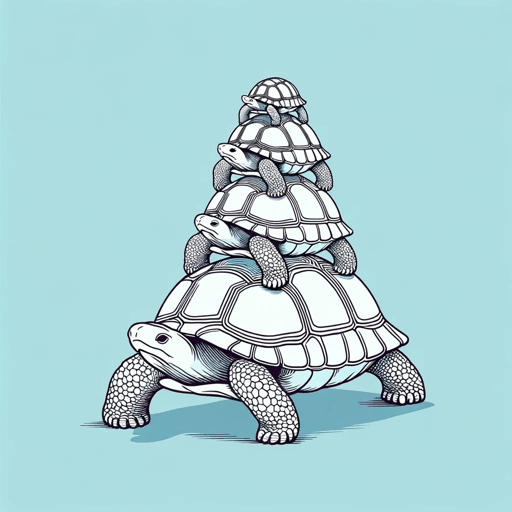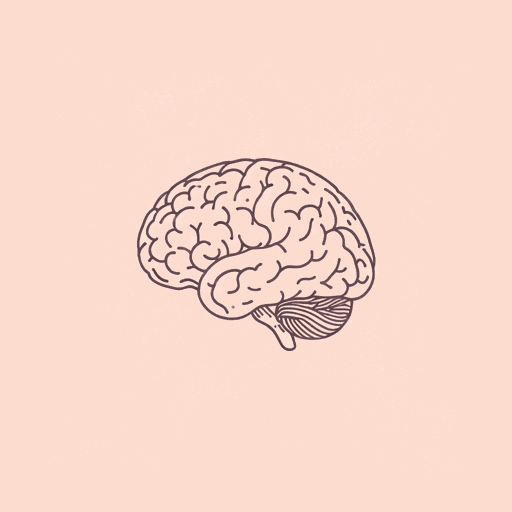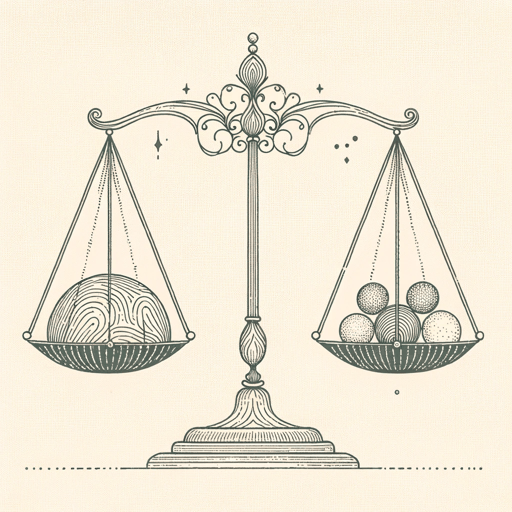56 pages • 1 hour read
Robert M. SapolskyDetermined: A Science of Life without Free Will
Nonfiction | Book | Adult | Published in 2023A modern alternative to SparkNotes and CliffsNotes, SuperSummary offers high-quality Study Guides with detailed chapter summaries and analysis of major themes, characters, and more.
Summary and Study Guide
Overview
Determined: A Science of Life Without Free Will is a science book written by Robert Sapolsky and published in 2023. Sapolsky, a renowned neuroscientist and biologist with a multifaceted career as a researcher, author, and educator, argues that free will is a myth. Using an interdisciplinary approach, Sapolsky shows how biological and environmental factors influence behavior, which leaves no room for free will. His goal is to encourage free will skepticism and illustrate that a belief in free will has negative consequences at both the personal and societal levels. He suggests that a host of societal ills can be corrected through the widespread acceptance that behavior is determined rather than a result of free will.
This guide refers to the Kindle e-book version published by Penguin Press in 2023.
Content Warning: The source text and this guide contain hypothetical discussions of violence, pedophilia, sexual assault, and death.
Summary
Sapolsky introduces his argument through an anecdotal metaphor that the world sits on top of an infinite stack of turtles. Human behavior, he posits, is caused by intricate interactions between biological and environmental forces rather than by free will. If this is the case, then morally judging others for their behavior is both illogical and unjustifiable. Studies on free will are often conducted in ways that could be compared to judging a movie by watching only the final three minutes. Benjamin Libet created Libetian-style experiments, which involve recording brain activity while asking people to make decisions and perform actions; such experiments have consistently shown that relevant brain activity occurs before a person perceives making a decision. While this aligns with Sapolsky’s overarching claim that free will is a myth, he deems the results irrelevant because of their limited scope. Behavior is caused not only by what happened in the seconds before but also in the days, months, years, and eons before the action.
Sapolsky criticizes those who morally judge people based on their behavior, targeting the ideas of Daniel Dennett, who claims that luck evens out over time. According to Dennett, people born into unfortunate circumstances have the free will to choose to overcome those circumstances. Sapolsky strongly disagrees, arguing that studies show that luck compounds overtime. To demonstrate, he tracks how various biological and environmental factors affect behavior over a time scale ranging from seconds to minutes, hours to days, and weeks to years before. This shows that intent does not arise from free will but is determined by an infinite string of antecedent factors. He counters Dennett’s views with the Adverse Childhood Experience score, which assigns a score of 0-10 to mark how many types of traumatic experiences a child has endured. Each point on the scale is correlated with a roughly 35% higher chance of antisocial behavior, such as criminal activity or violence. No one can control their genetics, epigenetics, culture, evolution, or environment in the womb or during childhood and adolescence. Furthermore, behaviors that are often attributed to either the presence or lack of willpower can be traced to the prefrontal cortex, or the decision-making center of the brain. A person’s perceived choices are dependent on the structure and function of their prefrontal cortex, which in turn is impacted by infinite preceding factors.
Sapolsky explores advanced branches of science—chaos theory, emergent complexity, and quantum indeterminism—that are sometimes used to support the existence of free will. Chaos theory shows that when three or more factors are involved, results become unpredictable; however, outcomes are still deterministic, meaning they are caused by preceding conditions. Some philosophers confuse the concepts of unpredictability and determinism and subsequently declare that unpredictability is proof of free will. Sapolsky counters that the two concepts are separate. Chaotic patterns, including behavior, are deterministic.
Emergent complexity is a similar phenomenon, in which simple components work together to form a complex unit. Common examples include ant colonies and bee hives, in which small components following simple rules coalesce to form complex and efficient systems without having any masterplan. Emergent complexity is also seen in bifurcation, a process in which something grows according to a certain set of simple rules before dividing, and in the power law, which shows that 80% of effects arise from 20% of causes. Although many cite emergent complexity as supportive of free will, Sapolsky counters that the unpredictability in emergent complexity does not equate to indeterminism. Further, the component parts in complex units are unable to freely choose; they operate according to rules.
Quantum indeterminism is a complex field, and Sapolsky cites the oft-repeated idea that quantum effects cannot be fully understood. Quantum indeterminism appears at a subatomic level through concepts including wave-particle duality and superposition, entanglement, and quantum tunnelling. Some researchers believe that these quantum effects can “bubble up” or compound to result in free will, while others believe that free will lies in a human capability of “reaching down” to utilize quantum indeterminacy. Sapolsky negates both these ideas, first by countering that quantum effects cancel each other out. He then shows that the ideas of harnessing or filtering quantum indeterminacy are illogical, as they would be highly inefficient or would result in random behavior.
After a brief recap and interlude, Sapolsky examines the implications of life without free will. Many feel that the belief in free will keeps society in check and that without it, people will run amok. Sapolsky negates this idea by comparing atheists and theists. Atheists show similar levels of prosocial behavior as theists; further, Scandinavian countries, which have high levels of atheism, have higher quality of life levels and lower crime rates than the highly theistic United States. Sapolsky hypothesizes that free will skepticism would impact sociality in a similar fashion as does atheism. He then addresses how behavioral change takes place without free will. Experiments have shown that behaviors can be learned through a combination of biological and environmental factors. This is exemplified through an experiment on a sea slug in which the sea slug retracted its gill for differing lengths of time depending on environmental considerations. Human behavioral change works the same way; neurons are affected by biological and environmental factors, which results in behavioral change. This can be seen in a simple eye-blink test, in which humans have been conditioned to blink at the sound of a bell because they unconsciously correlate it with a puff of air being blown into their eye. Social biases are created via the same process; people are exposed to environmental stimuli, such as a politician equating Mexican immigrants with rapists, and listeners are subsequently conditioned to develop strong biases against Mexican individuals.
Society has repeatedly demonstrated skepticism of free will in various circumstances, and that skepticism has led to improved social conditions. Examples of such occurrences include the widespread shifts in perspective on epilepsy, schizophrenia, and autism, which were once seen as having causes related to free will and were later found to have biological causes. Sapolsky emphasizes the idea that ignorance leads people to blame an individual’s antisocial or perceived abnormal behavior on free will. When the true cause of the behavior is discovered, people become more tolerant and understanding. He poses that all behaviors, rather than only certain behaviors, are determined and should not be attributed to free will.
Some of the most significant consequences of the free will myth occur within the justice system. Punishment is an evolved social trait, and the ability to punish wrongdoers releases potent feel-good hormones. Despite this fact, Sapolsky argues that the desire to retributively punish others can be overcome. Punishments have become increasingly less violent and public over the years—whereas people were once publicly drawn and quartered, executions are now relatively private and quiet affairs. Sapolsky suggests that a quarantine model should replace the current punitive model, citing Norway’s prison system in which inmates have a three-room living space with access to amenities and remote college educations. While some feel that pleasant quarantine experiences will result in high recidivism rates, Norway, with its low recidivism, has shown that is not the case.
Finally, Sapolsky refutes the notion that life without free will is cold and meaningless. Giving up free will requires the acknowledgement that people do not deserve praise for their achievements. Sapolsky argues that those who struggle with this concept are likely privileged. Belief in free will has numerous detrimental consequences, such as people being morally judged based on their weight, sexual orientation, height, attractiveness, intelligence, and a slew of other traits. People experience high levels of self-loathing because of this moral judgment. If free will is a myth, then these moral judgments are both unethical and unjustifiable. Sapolsky posits that widespread skepticism of free will would lead to drastic improvements.
Related Titles
By Robert M. Sapolsky




